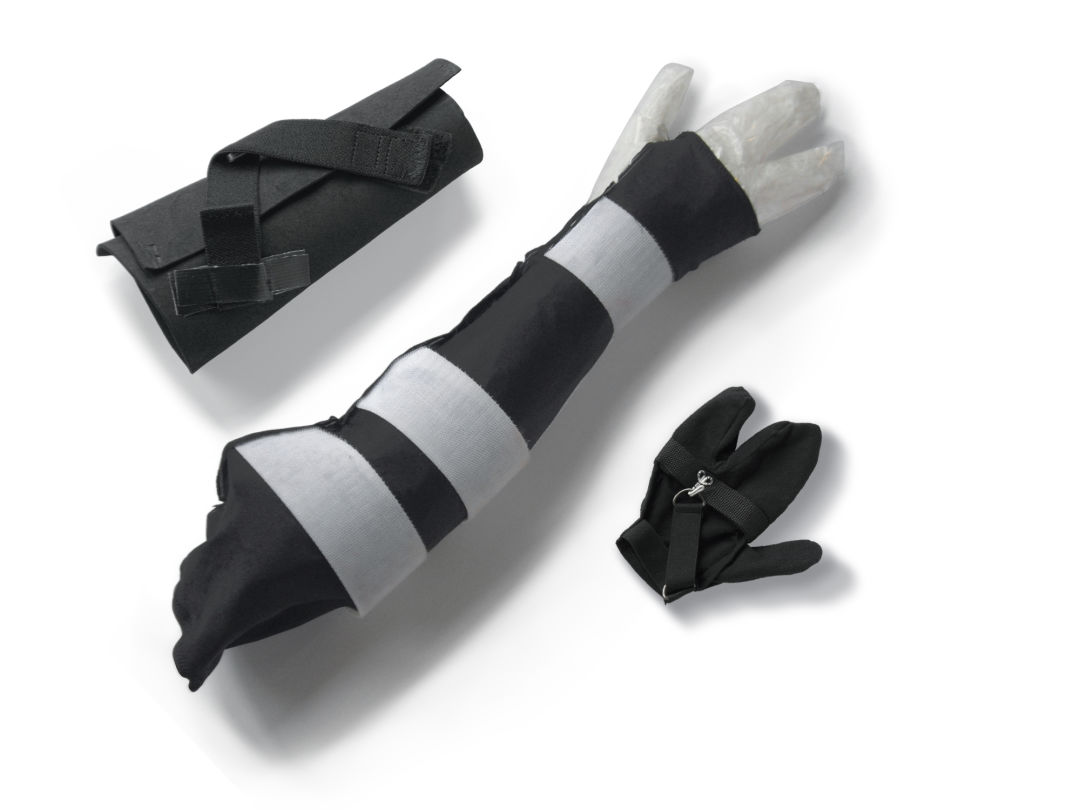Check Out This Portland-Made Wheelchair Rugby Gear

Viewers who tune in to the Rio 2016 Paralympics this September may notice the US wheelchair rugby team rolling in some rather spiffy new gear. From synthetic suede arm guards to Hypalon-like gloves, the kits sported by some players didn’t exist for the London 2012 Games, when the ambitious but chronically underfunded team earned a disappointing bronze. This year, US coach James “Gumby” Gumbert wants gold—and a University of Oregon design class and the Portland textile product studio Terrazign aim to give them that edge.
The Sport
An aggressive hybrid of rugby, handball, and wheelchair basketball, wheelchair rugby—also known as quad rugby and “murderball”—emerged in the mid-1970s as a full-contact sport for both men and women, suited to athletes with a wide range of physical function. On a regulation basketball court, two teams of four goal-seeking players must pass or bounce the ball within 10 seconds of possession, all while dodging (and crashing into) each other with crowd-pleasing frequency.
The Story
Earlier this year, UO students in the university’s Portland-based Adaptive Products class—a design course focused on creating real-world solutions for athletes with disabilities—started working with the US team. Seth McBride, a quadriplegic Portlander who’s medaled twice at the Paralympics and won two World Championships, offered the class his years of wheelchair rugby experience. Together, they brainstormed performance-boosting wearable designs—assisted by Terrazign founder Bill Dieter, who wedged the personal project between work for clients like NASA and Nike. Post-competition, Dieter will keep at it, still on his own dime: “It stretches far beyond the Olympics.”
The Gear
Arm Guards: There are no handbrakes in wheelchair rugby, only brutal arm force against burly rims. Players currently rely on compression sleeves (center). The project’s new, open design (top) ditched the longer sleeves but still protects from abrasion and also enhances breathability. (As of press time, these are still in development.)
Gloves: Tactile control is everything. Athletes often use gardening gloves secured with duct tape, burning through a set per game. Experience with limited mobility (her mother is handicapped) helped UO’s Becky Chierichetti dream up a split-fingered hand shoe with an “exoskeleton” (bottom). Dieter’s modifications slimmed down Chierichetti’s split-finger glove to two adjustable finger loops. “What Becky made was spot-on,” says Dieter, “just not simplified enough to scale up.” Look for the new design on McBride at the Paralympics.




